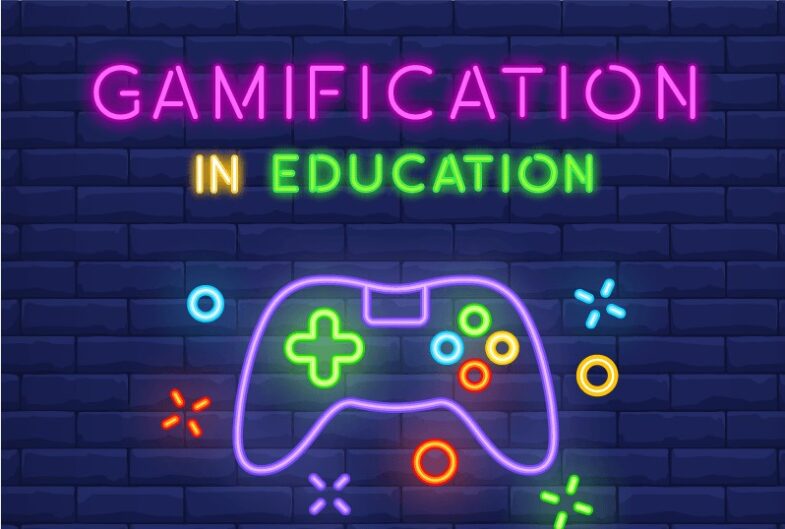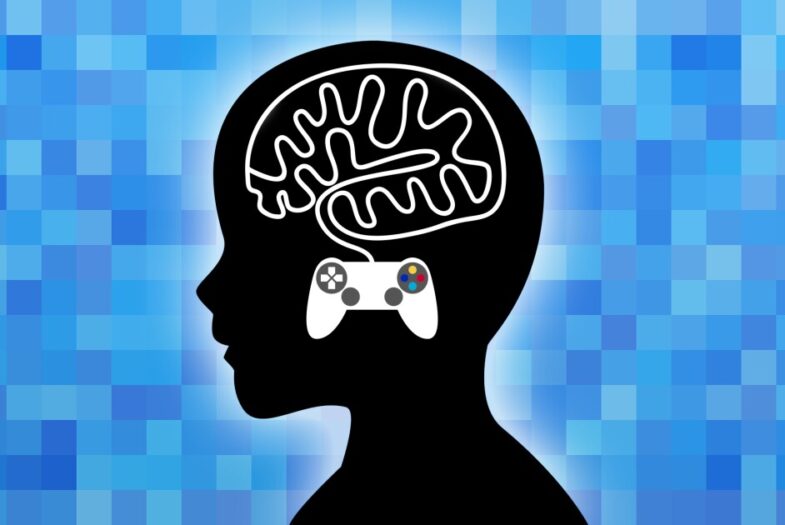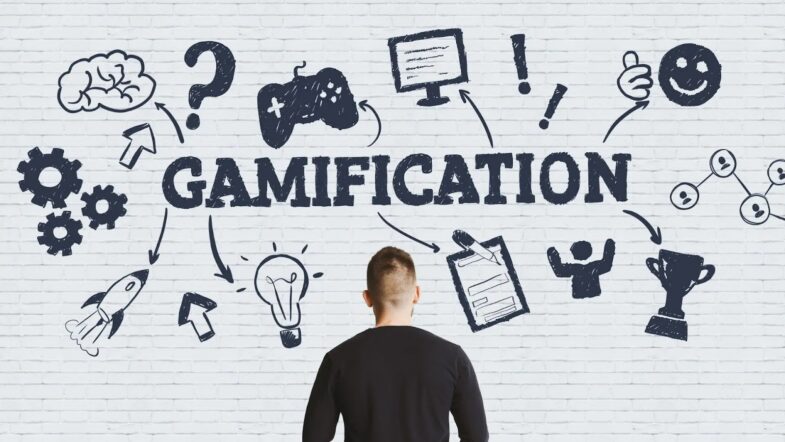Gamification is a relatively new concept but it is taking over the e-learning industry rapidly. The application of game elements in education has generated interest and enthusiasm among student groups and other online learners.
Teachers and students alike have responded positively to this new change. Developers are coming up with new e-learning features to contribute to the application of gamification. There are several discussions about its application in higher education and its possible merits.
The Concept Of Gamification In Education

Source: reading-rewards.com
Gamification refers to the process of incorporating game elements in education to provide a more enjoyable and interactive learning environment for students.
With the rise of online learning, gamification has made its way to several learning platforms. Companies have seen this as an opportunity to increase their leaner count and improve interaction.
While the traditional methods provide the material you need, they need to evoke interest or encourage the students to enjoy the learning process. That’s why long lectures and presentations are being modified to adapt to the current learning environment with gamification.
Some common game elements used include progress tracking, puzzles, creative challenges, score tables, group competitions, and more.
Focus On Student Interests & Needs
Gamification became popular when the education industry started focusing on the interests and needs of the students.
Its primary purpose was to enable learners to have fun while learning.
The concept of gamification in education is believed to promote healthy competition, enjoyable learning experiences, and more motivation. While lectures and presentations are still a part of the system, efforts are being made to include other versatile methods of learning.
As a result, the education system has also become more receptive to student feedback so teachers can understand what they need to do differently to help their students learn more effectively.
Benefits of Gamification For Teachers

Source: forbes.com
Teachers have positively responded to the incorporation of gamification in online learning systems.
Gamification introduced several features for teachers as well. They can track each student’s progress to see how well they are performing and responding to the material. This can be in the form of progress bars, badges or leaderboard points.
They can conduct live quizzes and games where students can automatically respond by clicking a certain option. This increased interaction boosts energy and social involvement in the classroom.
Virtual whiteboards are another feature that has benefited teachers. They can be used to teach normal classes and even build games using active widgets.
These new and updated e-learning tools enable teachers to develop effective and personalized lesson plans which cater to the individual learning needs of students. They can also look forward to teaching their students and trying their best to come up with creative assignments.
Other technologies like built-in AI help teachers track the degree of student engagement.
Developers have also created training videos for teachers who are new to these game-based features to enable everyone to adapt to the new changes in the online learning system.
Benefits Of Gamification For Students
The introduction of game elements in online learning has transformed the way students respond to learning. Challenges and rewards are always a motivator and applying these in education only adds to the enthusiasm of students.
Given below are some of the key benefits of gamification for students:
- Makes learning interesting, informative, and exciting.
- Helps students practice their skills in practical environments instead of just learning theoretical concepts.
- Enables them to provide feedback for sessions
- Encourages them to interact and engage with the teacher and their classmates.
- Helps students track their progress and see how well they are doing on the leaderboard.
- Rewards and achievements make students more competitive and motivate them to learn.
- Helps students be more productive with their time.
- They feel less forced to adapt to a single learning style and get the opportunity to explore new methods of learning.
- Makes them less prone to stress and burnout.
- Allows them to demonstrate new skills.
Gamification in education doesn’t replicate heavy video games or action games. It applies popular gaming concepts like rewards and challenges to excite students.
Learning with avatars is another concept rapidly growing in popularity. Certain gamification software allow students to create their own avatars for a more immersive virtual experience.
They can go to their avatar profile and check for assignments, deadlines and points.
Gamification Improves Focus & Concentration

Source: pinterest.com
Listening to six or seven hours of monotonous lectures takes a toll on the mind of students.
Gamification focuses on learning through task completion. Teachers assign their students tasks after they finish a certain topic or concept. Depending on how every student performs, the teacher can assess whether the students have understood the concept.
These tasks or challenges enable students to apply what they have learned in the classroom. This helps them retain the information better instead of forgetting it right after the class.
Certain gamification software like Brainscape repeats difficult concepts in specific time intervals to help students retain the information.
The addition of these fun elements also helps students to do better in serious assignments like essays and other written projects.
In times of burnout, they can use the mentorship of an expert essay writer to complete difficult essays that they couldn’t otherwise manage on their own.
Gamification Encourages Teamwork
Gamification elements also help foster a healthy environment for group learning and activities. Students compete with each other to win challenges and rank on top of the leaderboard.
Team-based activities which involve competing teams make the classroom more lively and promote a spirit of cooperation.
Gamification Aids MicroLearning
Microlearning focuses on specific learning objectives and simplifies bigger chunks of information into smaller ones.
Gamification focuses on information retention through short tasks, quick write-ups and other game-inspired challenges which enable microlearning. This prevents overloading students’ minds with information which is counterproductive for long-term memory.
With microlearning games, learners can retain new information linked to previous knowledge without feeling overwhelmed.
The Positive Impact of Gaming on Brain Development in Children

Source: freepik.com
Gaming can stimulate various cognitive functions in children, such as problem-solving, memory, attention, and spatial awareness. Many games require players to solve puzzles, strategize, and make decisions, fostering critical thinking and logical reasoning skills. Research has shown that playing video games can lead to improvements in children’s cognitive flexibility, allowing them to adapt to new situations and think creatively when faced with challenges.
It can also positively impact children’s emotional development by teaching them essential life skills, such as resilience and perseverance. Games often present players with difficult challenges, which can be frustrating at times. However, as children learn to overcome these obstacles, they develop a sense of accomplishment and self-efficacy, fostering resilience and a growth mindset.
Furthermore, gaming can serve as a healthy outlet for stress relief and emotional regulation. Engaging in immersive game worlds allows children to escape from daily pressures, providing a safe space for them to explore their emotions and learn how to cope with challenging situations.
Social Development
In today’s interconnected world, many games offer online multiplayer experiences, where players can communicate and collaborate with others from around the globe. This promotes social interaction and teamwork, allowing children to develop essential communication and cooperation skills.
Additionally, gaming communities provide opportunities for children to form meaningful friendships and connections based on shared interests. In these spaces, children can practice empathy, active listening, and conflict resolution, all of which are vital for maintaining healthy relationships in real life.
What games to play?

Source: pinterest.com
Various types of games have been shown to have a positive impact on the brain, fostering cognitive, emotional, and social growth. Here are some examples of game genres that can contribute to overall brain development:
Puzzle Games
These games require players to think critically and logically as they solve problems and overcome challenges. Examples include Tetris, Portal, and Monument Valley. By engaging in puzzle-solving, children can improve their spatial reasoning, problem-solving, and cognitive flexibility.
Educational Games
Educational games are specifically designed to teach essential academic skills, such as math, language, and science. These games incorporate fun and engaging gameplay with learning, making it easier for children to grasp and retain new information.
Typing Games
Typing games are an entertaining and effective way to teach children typing skills, which are becoming increasingly essential in today’s digital age. These games focus on improving typing speed and accuracy while also reinforcing language and spelling skills. By engaging children in a fun, interactive manner, typing games can significantly enhance their keyboard proficiency and overall digital literacy this is something expert essay writers often use to improve their skills or just asking about assistance https://thesisgeek.
Strategy Games
Strategy games require players to plan, make decisions, and manage resources to achieve specific objectives. These games help develop critical thinking, decision-making, and long-term planning skills.
Social and Cooperative Games
Online multiplayer games that encourage teamwork and collaboration promote social interaction and communication skills. As children work together to achieve common goals, they learn the value of cooperation, active listening, and empathy.
Conclusion

Source: youtube.com
Some may argue that applying game elements in education may distract students from the actual learning material.
However, it has proven to be advantageous and this is visible in the increased engagement of students and improvement in their performance.
